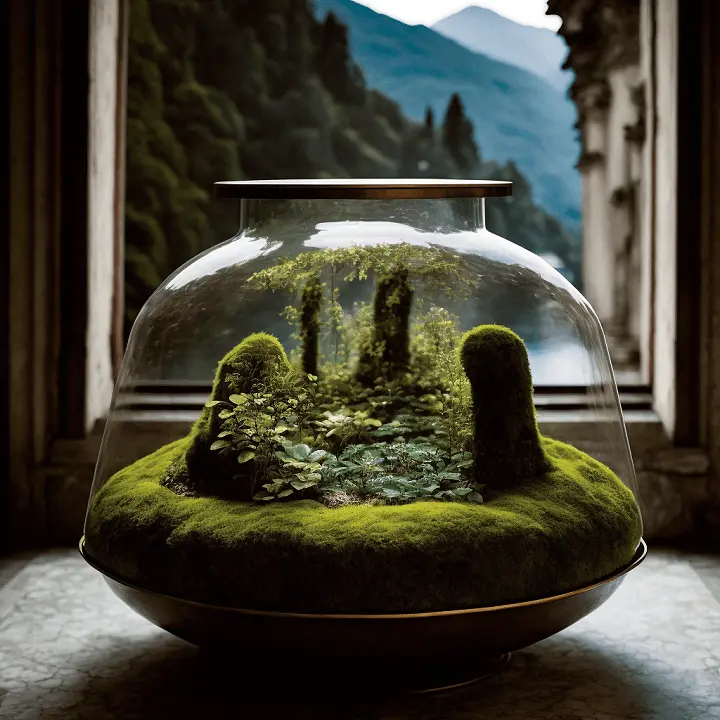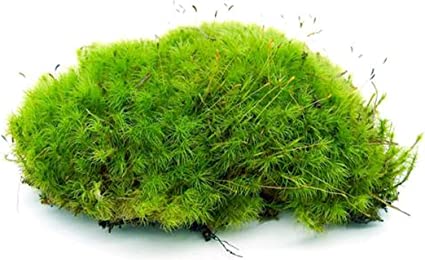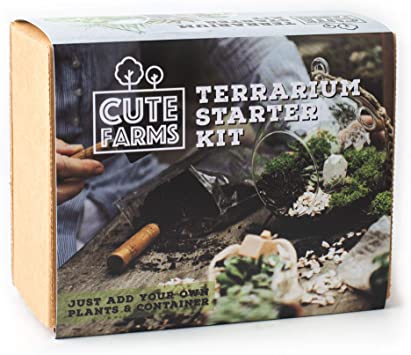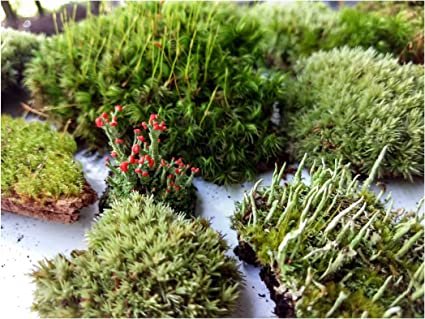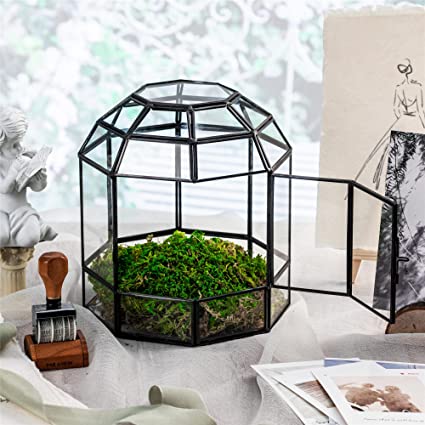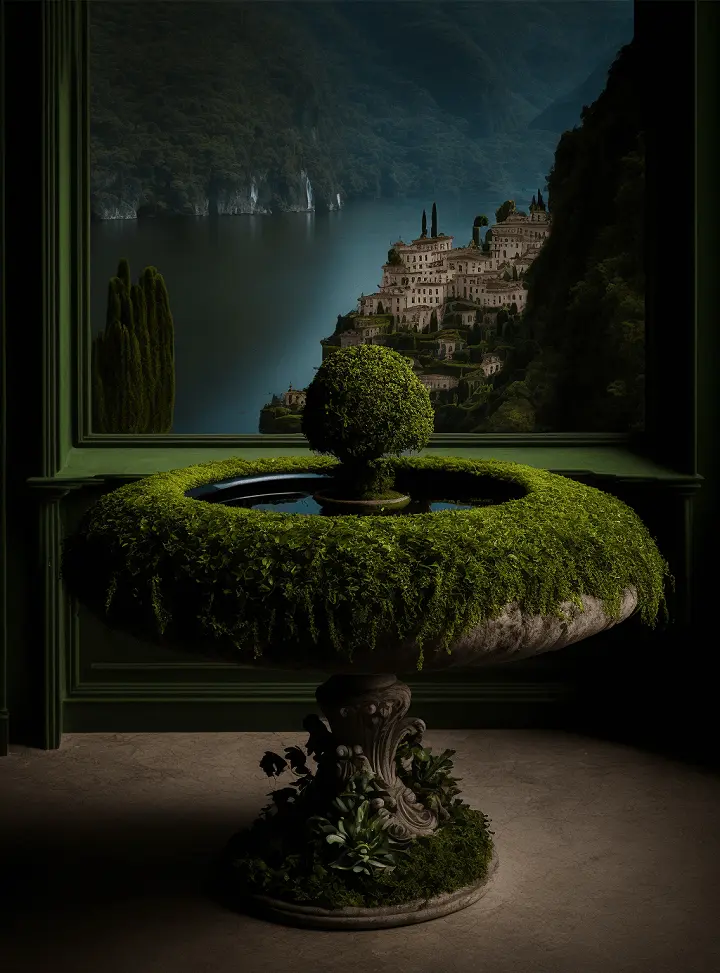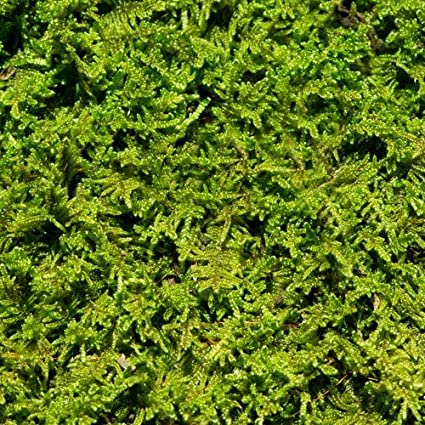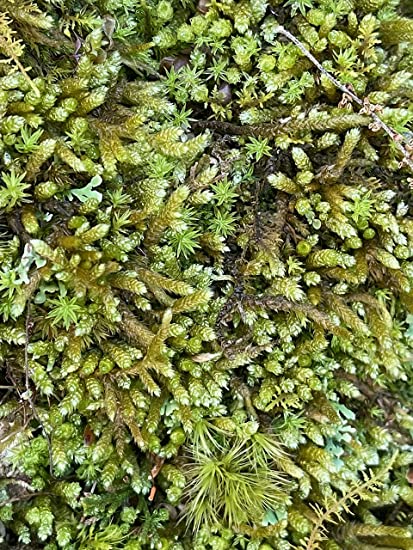How to Grow Moss
Moss can be grown outdoors and indoors as a houseplant.
Although moss can grow in full sun, most mosses prefer to be protected from direct sunlight. Both indoors and outdoors, mosses enjoy cooler temperatures with lots of moisture and partial shade.
Moss can grow outdoors on lawns, walls, walkways, stone furniture, wood, and almost any naturally porous material.
In sunnier outdoor areas with plenty of moisture, moss protection can be achieved with taller grasses, shrubs, flowers, and other plants.
Indoors, unless you live in a very humid environment, moss tends to do best inside a glass terrarium in an area where it has enough sunlight to photosynthesize, but not so much that it dries out, gets hot, and becomes stressed.
Moss can also be grown on almost any wood substrate, in a frame as wall art, or on a rock in a dish of water. However, be advised that in dryer climates mosses grown outside of terrariums require regular watering and/or misting. This is because moss acts as a type of humidity regulator, releasing its moisture into the air when its dry and sucking moisture from the air when its wet.
Moss can be propagated by taking clippings and placing them on a damp surface, such as a piece of wood or soil. This can also be achieved via a Moss Milkshake, a method described below.
It is important to keep the moss consistently moist and in low-light conditions. Since moss is not a flowering plant, it does not require any fertilization to propagate.
- April 30, 2024
- Dagmara Mach
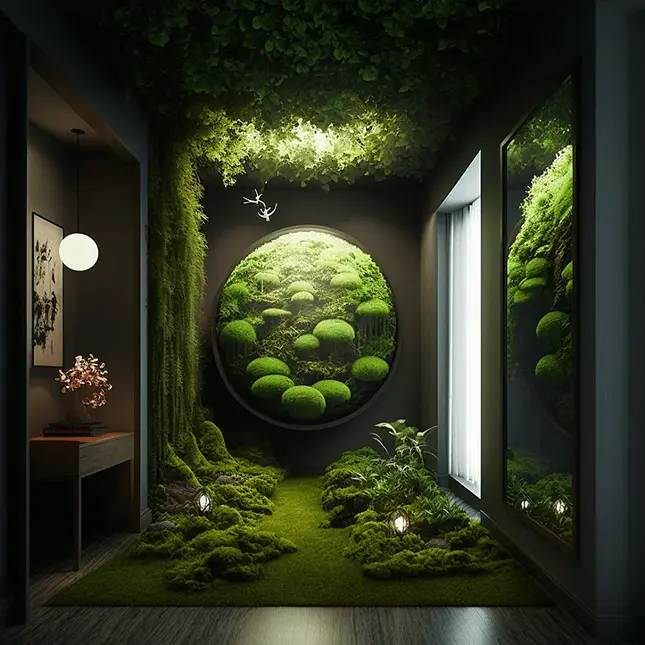

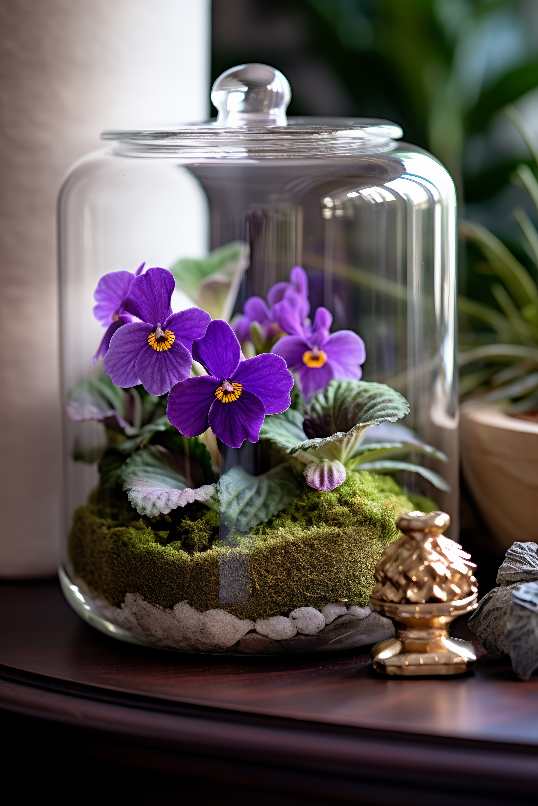
African violets (Saintpaulia species)
Moss terrariums are easy to care for and can be a beautiful addition to any home or office design. They can be created using only moss or with other small terrarium plants and decor elements, which are then enclosed in a glass container, such as a jar or a vase, to create a microclimate that mimics the moss’s natural environment.
A moss terrarium is a type of container garden that is either fully or semi-enclosed in glass. The glass terrarium allows for the creation of a miniature ecosystem, which provides the climate and weather conditions that mosses as well as other more exotic plants need to be able to survive indoors.
A moss bath mat is a type of floor mat that is made from moss.
These mats are typically made from live moss, which is grown and then harvested to create the mat.
The moss is then placed on a backing material, such as a piece of fabric, to hold it in place.
Moss bath mats are often used as a natural alternative to traditional bath mats, as they are more eco-friendly and can provide a more natural and soothing aesthetic in a bathroom.
They are known for being soft, absorbent, and anti-bacterial.

A tabletop moss garden is a type of container garden that features various types of artistically arranged moss.
Unlike the glass moss terrarium a tabletop moss garden is not enclosed, but open-air. As a result, it can help regulate indoor humidity, and provide air filtration. However, due to their open-air style, tabletop moss gardens require humid conditions or lots of misting to grow.
This moss garden can be placed on a table or other flat surface, arranged into beautiful structures and grown atop cones or pyramids to add unique architectural features.
Alternatively, it can be grown directly on the table itself.
Like a moss terrarium, a tabletop moss garden is relatively easy to care for and adds a beautiful naturescape to ever interior..
Tips for outdoor moss gardening:
- Choose the right location: Mosses thrive in moist, shady areas with little direct sunlight. Look for spots that receive dappled sunlight, such as under trees or in the shade of a building.
- Prepare the soil: Moss doesn’t require soil to grow, but it does need a surface to attach to. Make sure the area you want to plant moss on is free of weeds and debris. If you have a large area to cover, you may want to consider tilling the soil to create a smooth, even surface.
- Water regularly: Moss requires consistent moisture to thrive, so make sure to water it regularly. Avoid overwatering, as this can lead to the growth of algae and other unwanted plants.
- Add nutrients: Moss doesn’t require fertilizers, but you can add a small amount of organic matter such as compost or leaf mold to the soil to help it retain moisture.
- Be patient: Moss takes time to establish itself, so be patient and allow it to grow naturally. Once it has taken root, it will require minimal maintenance and will continue to thrive in the right conditions.
- Consider moss species: Different species of moss have different requirements, so consider which species is best suited for your location and climate. Some popular mosses for outdoor gardening include cushion moss, haircap moss, and sheet moss.
What Are Mosses?
Mosses make up some of the oldest and most drought-resistant plants on earth.
Known as bryophytes, mosses get classified into the plant division Bryophyta – a division estimated to contain more than 18,000 identified bryophyte species.
Dating back over 450 million years, bryophytes are considered by botanists to be some of the oldest plants in existence. More advanced vascular plants like ferns didn’t appear on Earth until about 50 million years later.
Mosses source water and nutrients from the outside versus from the ground and reproduce by growing spores instead of producing blooms and seeds.
Instead of vascular structures like leaves, stems and roots mosses have rhizoids, root-like appendages that anchor them in place.
Where To Find Moss in Nature
Found in wet spots like shady forests and alongside creek beds, living moss plants for indoor and outdoor growing can be harvested in the wild.
Mosses usually grow close together in clumps or mats and can be found throughout most parts of the world including the Arctic. They prefer acidic soil and areas with plenty of waterlogged decaying matter.
Moss can be found in a variety of outdoor locations, including:
- Forests and woodlands: A common groundcover in many forests and woodlands, moss grows on the forest floor, tree trunks, and rocks.
- Wetlands and bogs: Moss is often found in wetland and bog habitats, where the damp, nutrient-rich soil provides ideal growing conditions.
- Streams and rivers: Moss can be found growing on rocks and other surfaces in streams and rivers, where it can help stabilize the stream bed and provide a habitat for aquatic organisms.
- Urban environments: Moss can grow in urban environments, such as on walls, roofs, and sidewalks, where it can create a natural and attractive feature in an otherwise built-up area.
- Tundra and Arctic regions: Some moss species are adapted to cold and extreme environments, allowing the to grow in the tundra and Arctic regions, where they play an important role in the local ecosystem.
In general, moss tends to thrive in areas with high moisture content and low light levels, such as shaded areas or areas with frequent rainfall. If you’re interested in finding moss outdoors, you may want to explore wooded areas, parks, and other natural habitats in your local area.
In addition to being free, harvesting your own, local moss assures that the moss you obtain is suited to your local climate and therefore able to grow, thrive and spread in the way you need it to.
Furthermore, research shows that getting your hands dirty with soil bacteria while harvesting your moss is excellent for your health, immunity, and positive attitude.
After finding your moss outdoors, harvest it by wedging a thin flat device such as a spatula underneath its base.
Then gently lift the moss plant so as not to damage it and place it inside a plastic bag for transport.
Moss is generally quite hardy, so if you’re outside and you have neither a spatula or a plastic bag, pick some up with your hands and shove it in your backpack.
To prevent bacteria growth and kill existing organisms, you can pour boiling water over the container and/or base you plan on using. However, I have yet to sterilize my planting surface prior to moss gardening and have not suffered any of the consequences that gardening guides warn you about.
Your moss garden can be a container with rocks or soil, a silicone mat with sides, a porous rock, a piece of wood or even a wall. As long as your moss plants receive plenty of water and daylight the moss encasement possibilities are endless.
If you’re using a container with soil, lining the container’s base with a thin layer of activated charcoal atop a layer of rocks will aid in maintaining soil health and proper moisture levels. The charcoal will work to remove toxins and help prevent mold or mildew while the rocky bottom layer will promote drainage.

Keep your moss garden growing in an area with plenty of indirect daylight as mosses require it for photosynthesis.
Provide adequate hydration and humidity by watering or liberally hydrating with a spray bottle. Mosses like areas with high humidity such as bathrooms.

Due to their lack of lengthy vascular root structures mosses have to absorb water and nutrients from the air around them. In doing so, mosses also collect undesirable air particles such as smoke and bacteria, helping to purify their environment.
Although moss plants are typically found in wet, shady areas, mosses are actually one of the most drought resistant plants in existence. Some species have therefore adapted to survive in seasonally dry climates such as alpine rocks or stabilized sand dunes. During lengthy dry periods, mosses are able to completely dry-out and suspend all growth. When moisture returns, moss plants will essentially come back from the dead and resume their photosynthetic metabolism.
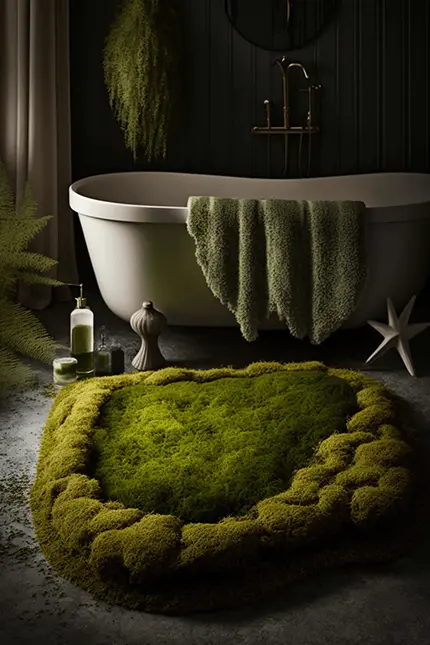
Mosses can help stabilize room moisture levels to maintain a relative humidity of between 40 and 60 percent.
When humidity rises above 17 grams/cu. meter, moss will absorb moisture from the air.
When humidity drops below 12 grams/cu. meter mosses humidify the air by releasing moisture back into the environment.
This moss humidification method is especially useful when humidity drops during flu season. Research shows that influenza is most likely to spread at humidity levels below 10 grams/cu. meter.
Mosses have no known pests or diseases.
Does Moss Need Sunlight?
Most species of moss do not require direct sunlight to survive, but they do need some light to carry out photosynthesis, which is the process by which plants and other organisms convert light energy into chemical energy to fuel their growth and metabolism.
Mosses can grow in a range of light conditions, from full sun to deep shade, but they tend to grow best in partially shaded areas with indirect light. This is because too much direct sunlight can cause moss to dry out and become stressed, while too little light can limit its growth and reproductive success.
In summary, while moss does not necessarily require direct sunlight, it does need some amount of light to thrive and carry out essential life processes.
Can Mosses Live in Dry Climates?
Although moss plants are typically found in wet, shady areas, mosses are actually one of the most drought resistant plants in existence. Some species have therefore adapted to survive in seasonally dry climates such as alpine rocks or stabilized sand dunes. During lengthy dry periods, mosses are able to completely dry-out and suspend all growth. When moisture returns, moss plants will essentially come back from the dead and resume their photosynthetic metabolism.
What Is Not Moss?
There are several plants commonly referred to as mosses that are not actually moss. Reindeer moss (Cladonia rangiferina), also known as caribou moss, and so dubbed due to its integral role in the diets of grazing animals such as reindeer, caribou, moose and musk oxen, is actually a lichen belonging to the Cladoniaceae family. Related to neither mosses nor lichens, Spanish moss (Tillandsia usneoides) is another fraud. A flowering plant that grows hanging from tree branches in either full
sun or partial shade, Spanish moss is an angiosperm in the family Bromeliaceae (the bromeliads). Club mosses and Irish moss are two other fakers with misleading common names.
What Side Does Moss Grow On A Tree?
Moss can grow on any side of a tree, depending on various factors such as the amount of sunlight, moisture, and nutrients available. However, in general, moss tends to grow more on the north side of a tree in the Northern Hemisphere because this side receives less sunlight and stays moister, providing ideal conditions for moss growth.
But this is not a hard and fast rule, and the presence of moss on a particular side of a tree can also be influenced by other factors, such as the prevailing winds, the type of tree, and the surrounding environment.
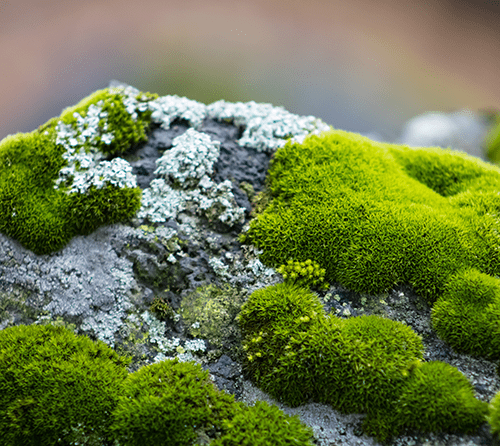

What Is Peat Moss?
Peat moss is a type of moss that grows in wetland areas and bogs. It is unique in that it grows in areas with very low oxygen levels, which causes the dead plant material to accumulate and form layers of peat over time. Peat moss is harvested from these layers of peat and is commonly used as a soil amendment or growing medium in gardening and horticulture -especially when making plant terrariums or moss bath mats.
Peat moss is highly valued for its ability to retain water and nutrients in the soil, making it an excellent choice for improving soil quality and aiding in plant growth. It is also often used as a component in potting mixes and soilless growing media.
However, the extraction and use of peat moss can have negative environmental impacts, such as contributing to greenhouse gas emissions and the destruction of natural wetland habitats. As a result, there has been increasing interest in finding sustainable alternatives to peat moss in gardening and horticulture.
How Many Types of Mosses Are there?
Scientists estimate that there are approximately 12,000 species of moss classified in the Bryophyta plant division and about 1,000 of those can be found in the United States.
What Is Moss Paint?
The moss milkshake creates a type of moss paint that can then be spread across surfaces such as rocks, fences, brick walls, trees, ceramic pots, or wherever you desire your moss to grow. An alternative to buying or collecting additional moss plants, the moss milkshake, is likely the simplest way for growing moss without having to wait for them to spread on their own.
How to Make a DIY Moss Milkshake?
2 cups of buttermilk and 2 cups of water, topped with moss to fill the blender. The mixture should be blended until it reaches a milkshake consistency and can then be painted or poured onto the substrate of your choice. Be sure to give your milkshake concoction plenty of misting and you should be growing moss within three weeks.

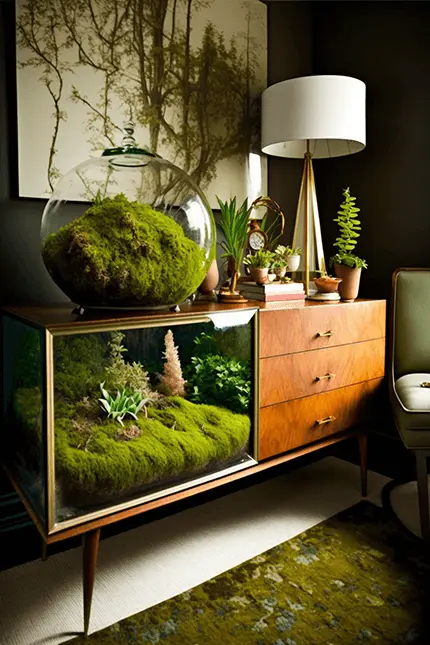
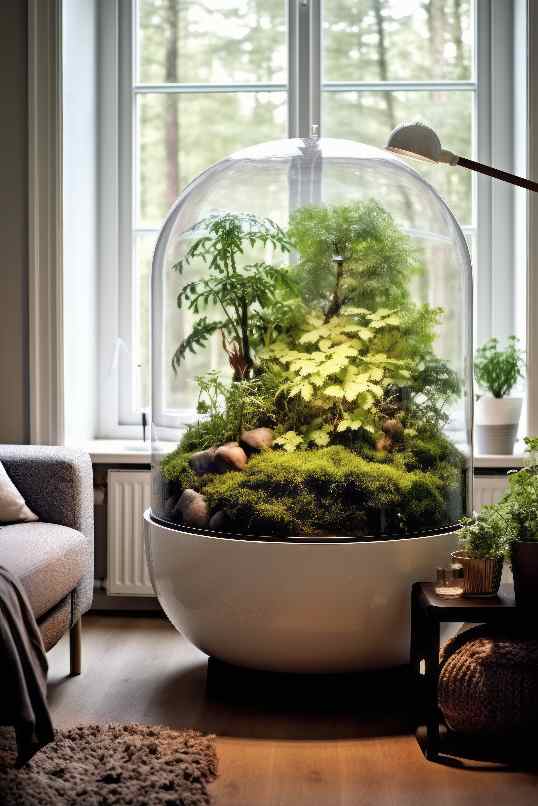
Low maintenance microclimates for indoor plants. Learn more.
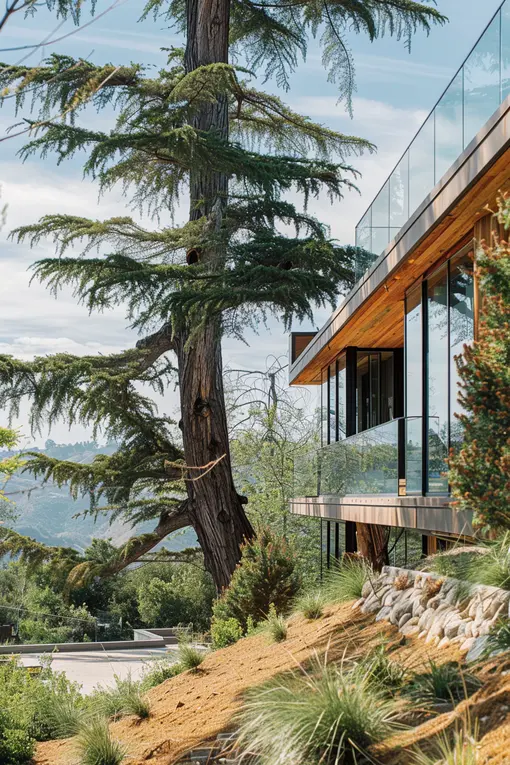
These grasses, shrubs, and trees stabilize soil, reduce runoff, and improve infiltration through deep and extensive root systems. Learn more.
